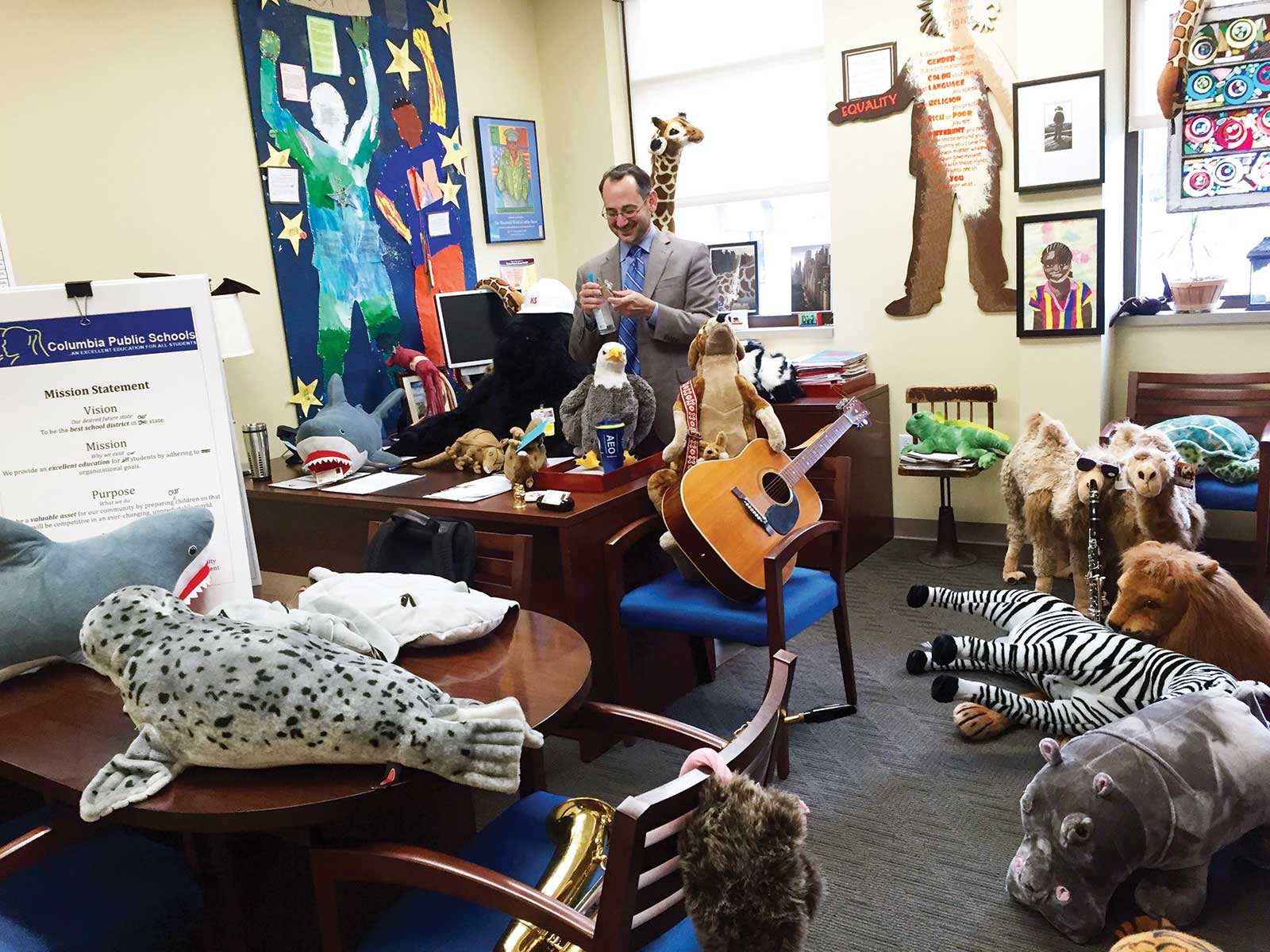Teaching Pets

Stuffed animals educate first grade students.
Pets in schools are great for educating and creating a fun classroom atmosphere for children. Unfortunately, school pets are generally limited to small animals — hamsters, turtles, and the like. But a few Columbia schools are stretching those boundaries through the Adopt a Stuffed Animal program.
This program uses stuffed animals, sometimes life-sized ones, to deepen first graders’ educational experience.
Brenda Heavin, a Fairview Elementary School teacher, explains, “The program is designed to give the kids experience with different types of animals, whether they’re in the forest, in the Arctic, on prairies, in a desert, rainforest, ocean — any of the habitats, we have them.”
For teachers using the program, a solid-colored box is sent to their classroom every two weeks (but no peeking is allowed). With the help of clues describing the stuffed animal inside the box, students guess what animal might be inside.
Becca Turner, a Locust Expressive Arts Elementary teacher, says: “I would call on different students to make predictions, and when they make their predictions, we would talk about why you would make your prediction. Then we would open the tub, and in the tub were books that taught about the animals’ lifecycle, habitat, environment, and then the science department put together a link that you could click to teach you about the animal. Then, if there was a live camera, we would pull up a camera and watch the animal. It just generated lots of conversation.”
The students have had many animals to talk about. When the program is uninhibited by COVID-19, up to 30 stuffed animals are circulated throughout different first grade classrooms. Becca believes these animals have already been beneficial in her teaching.
Students often “go home and tell their parents about what was going on,” Becca says, “so I think it opens up learning in the home.”
She adds that she loves it “when [students] are learning something throughout the school year, and they raise their hands and say, ‘I remember that from when we did our lion,’ or they’re able to make connections from something that they learned earlier in the year.”
Although the Adopt a Stuffed Animal program was put on hold because of COVID-19, Brenda and Becca believe that it might be in use within the next year. When it is, they invite parents to participate in the program as guest speakers and help push first grade education even further.
“If parents have any expertise on these animals, I always welcome it,” Becca says.
Brenda, who has already had guests speak on animals in her class, says, “If anybody has something they would love to do in the classroom, reach out to a teacher or building and have the administrator hook them up.”
By blending different learning channels with hands-on experience, the administrators of the Adopt a Stuffed Animal program give first grade students in Columbia schools a deeper understanding of the “pets” that sit in their classroom every week.


